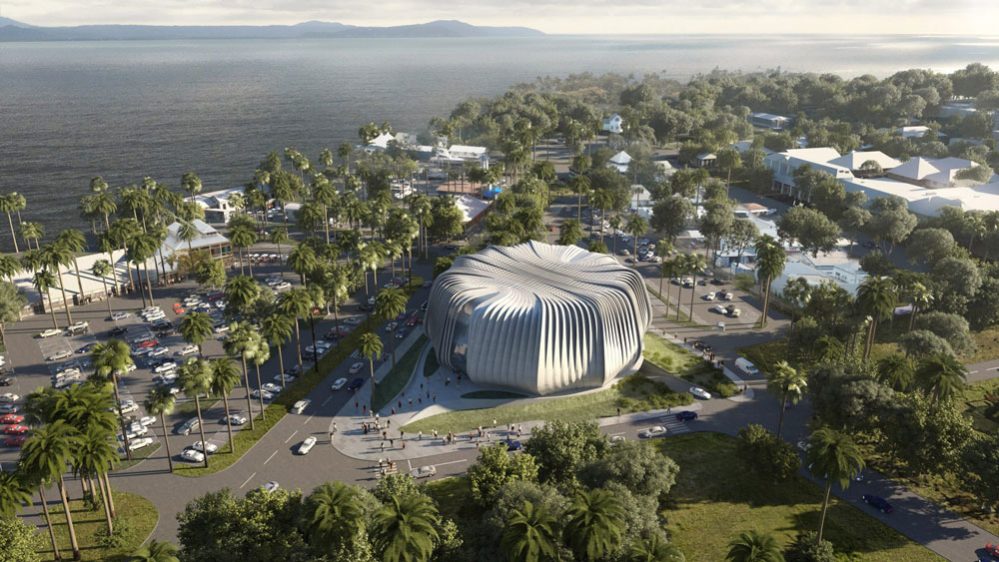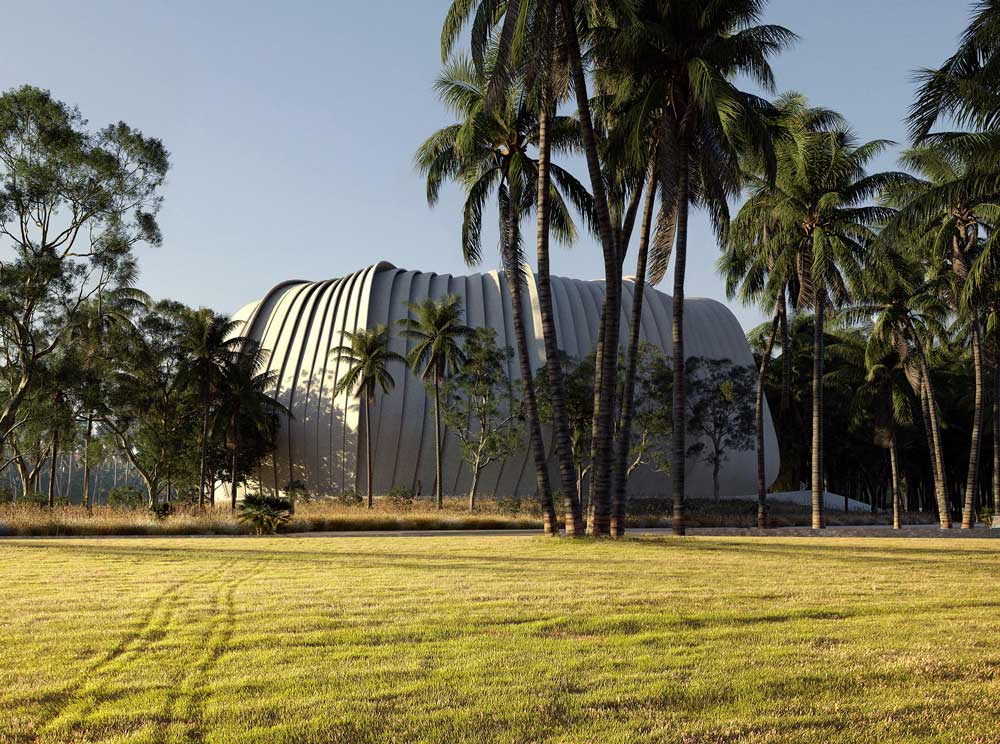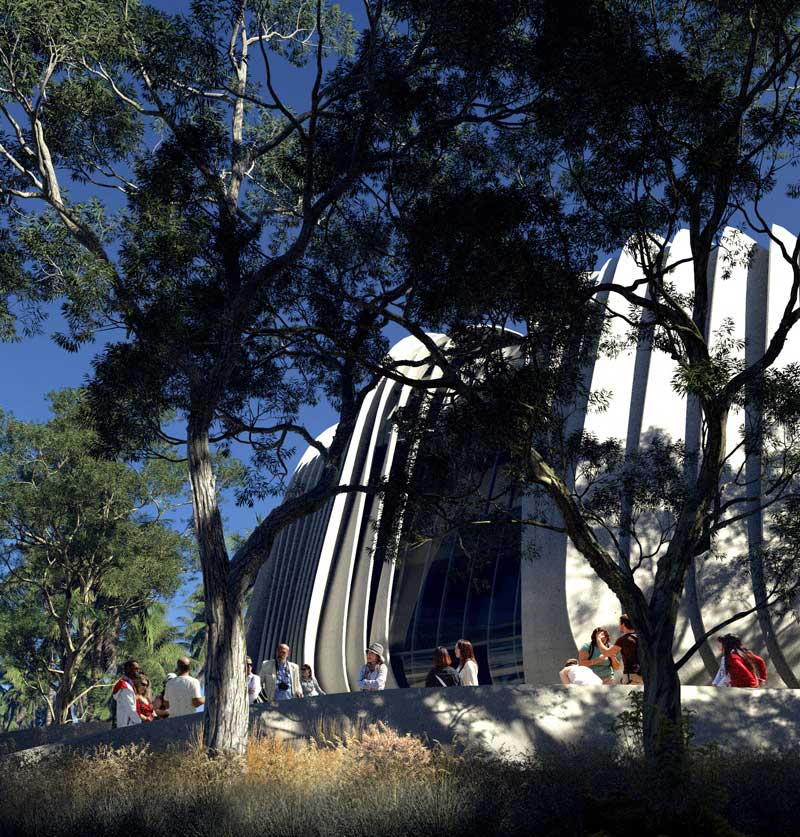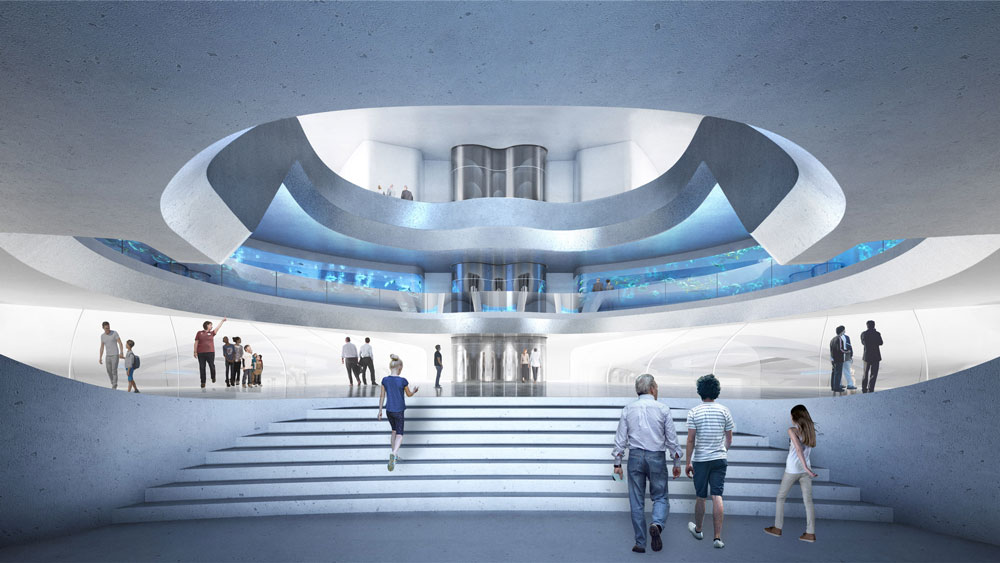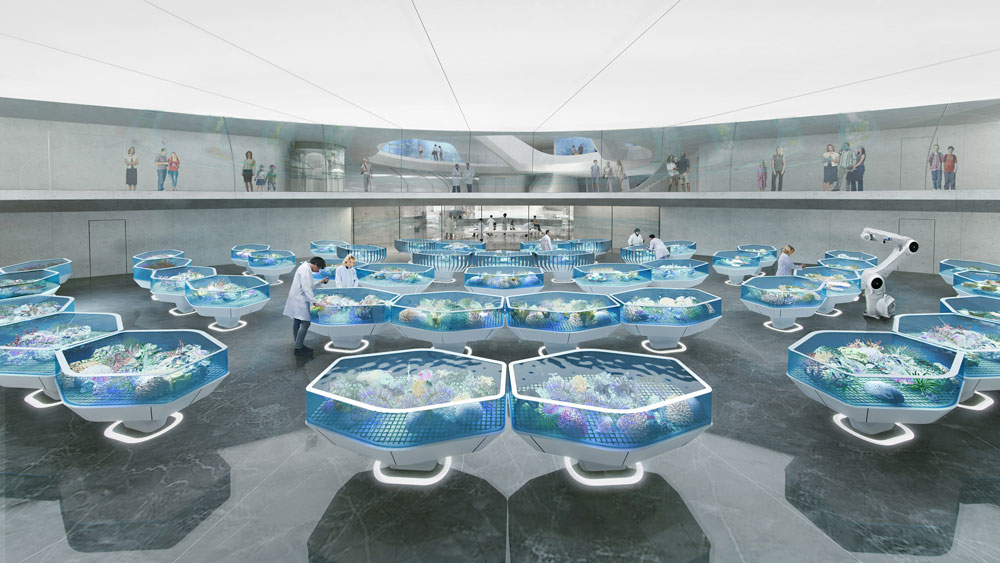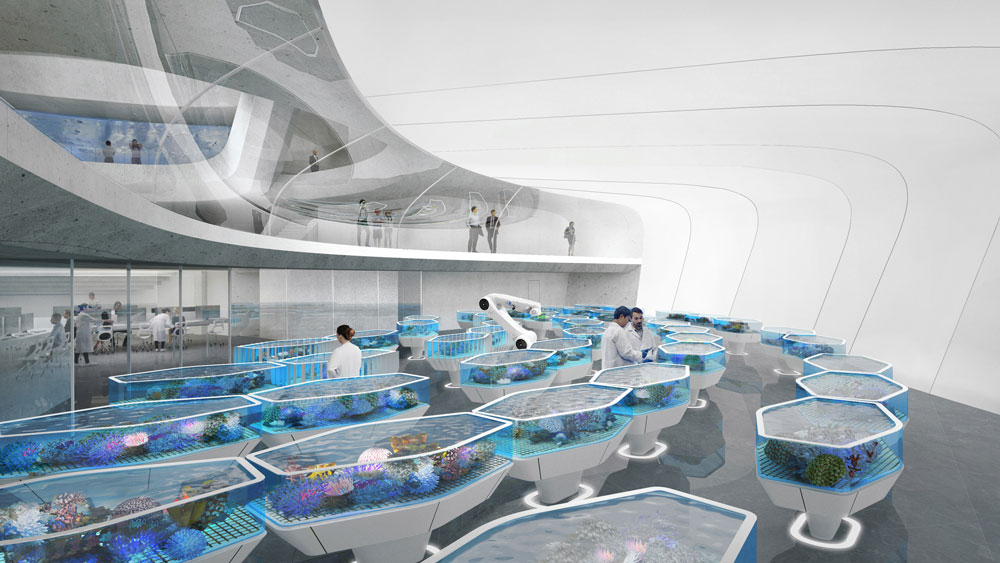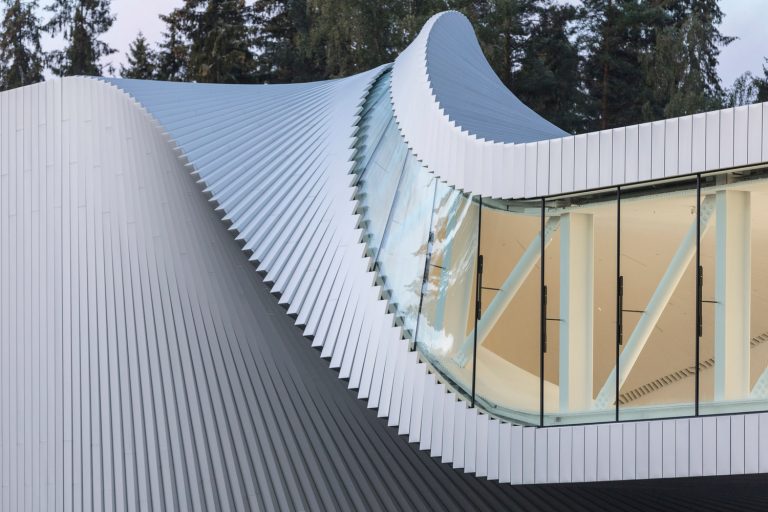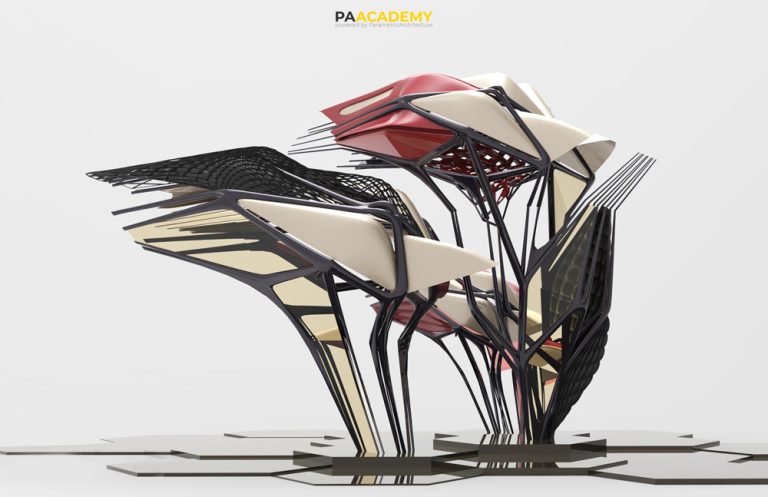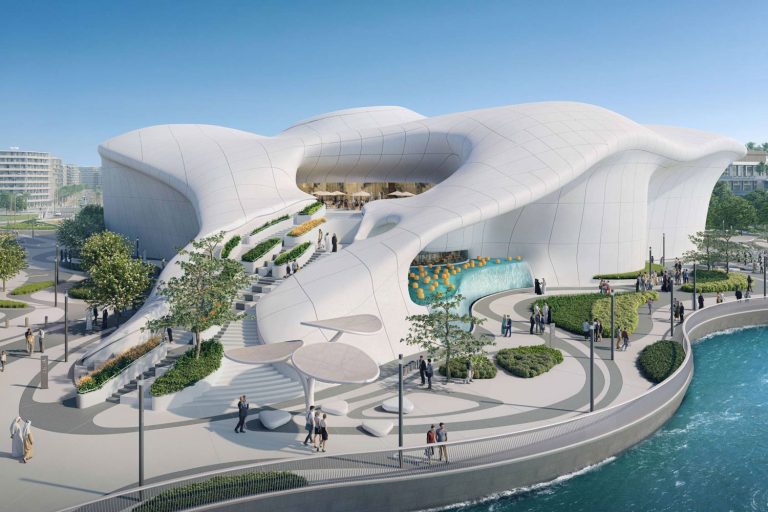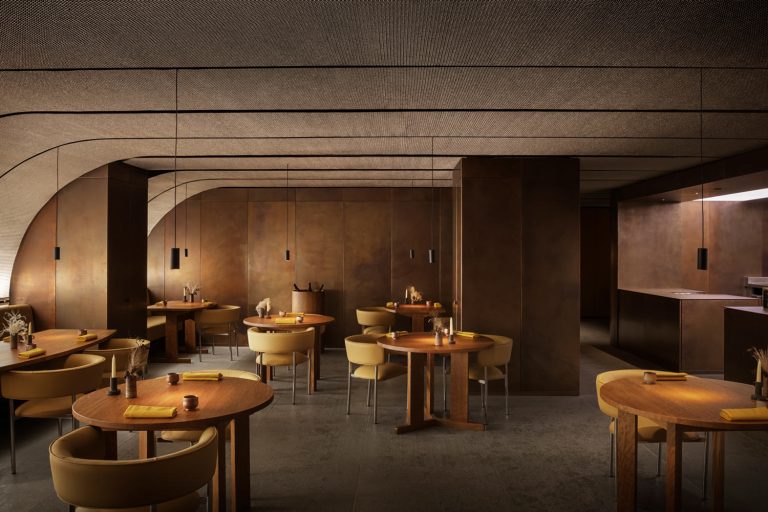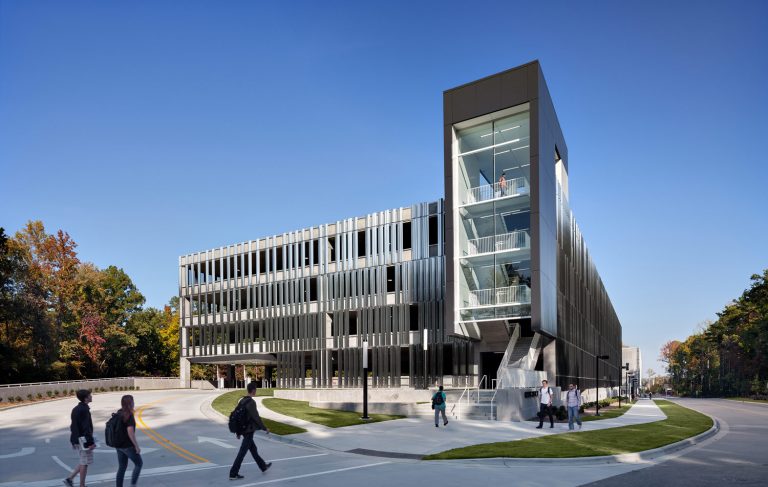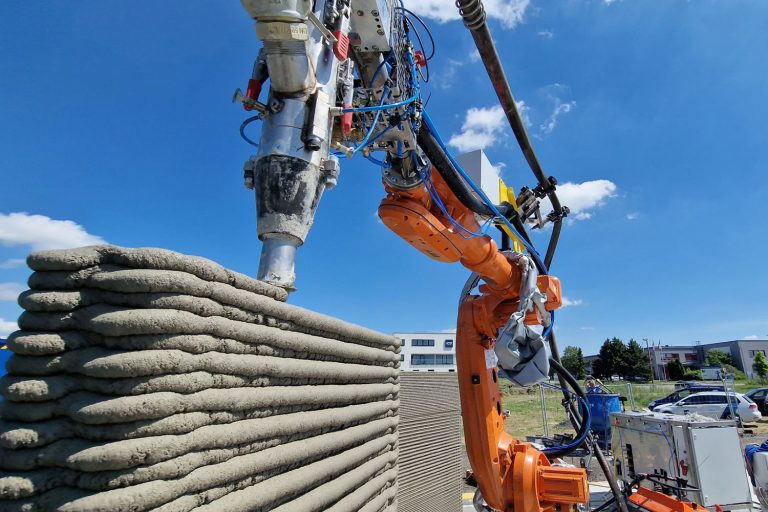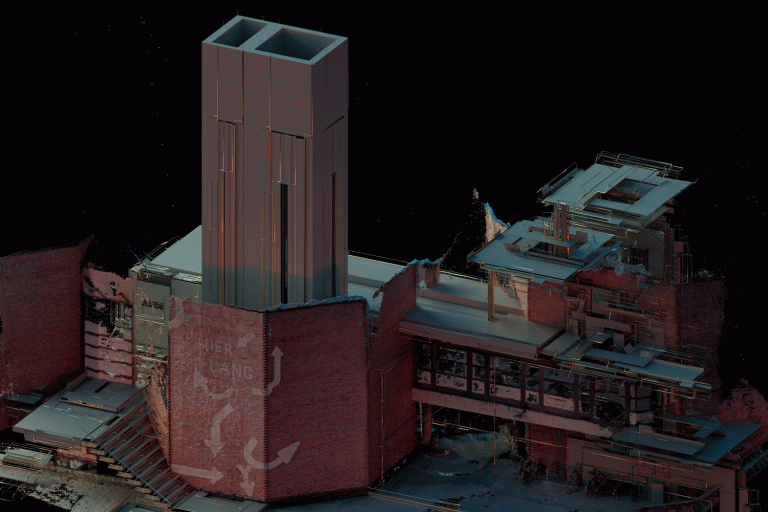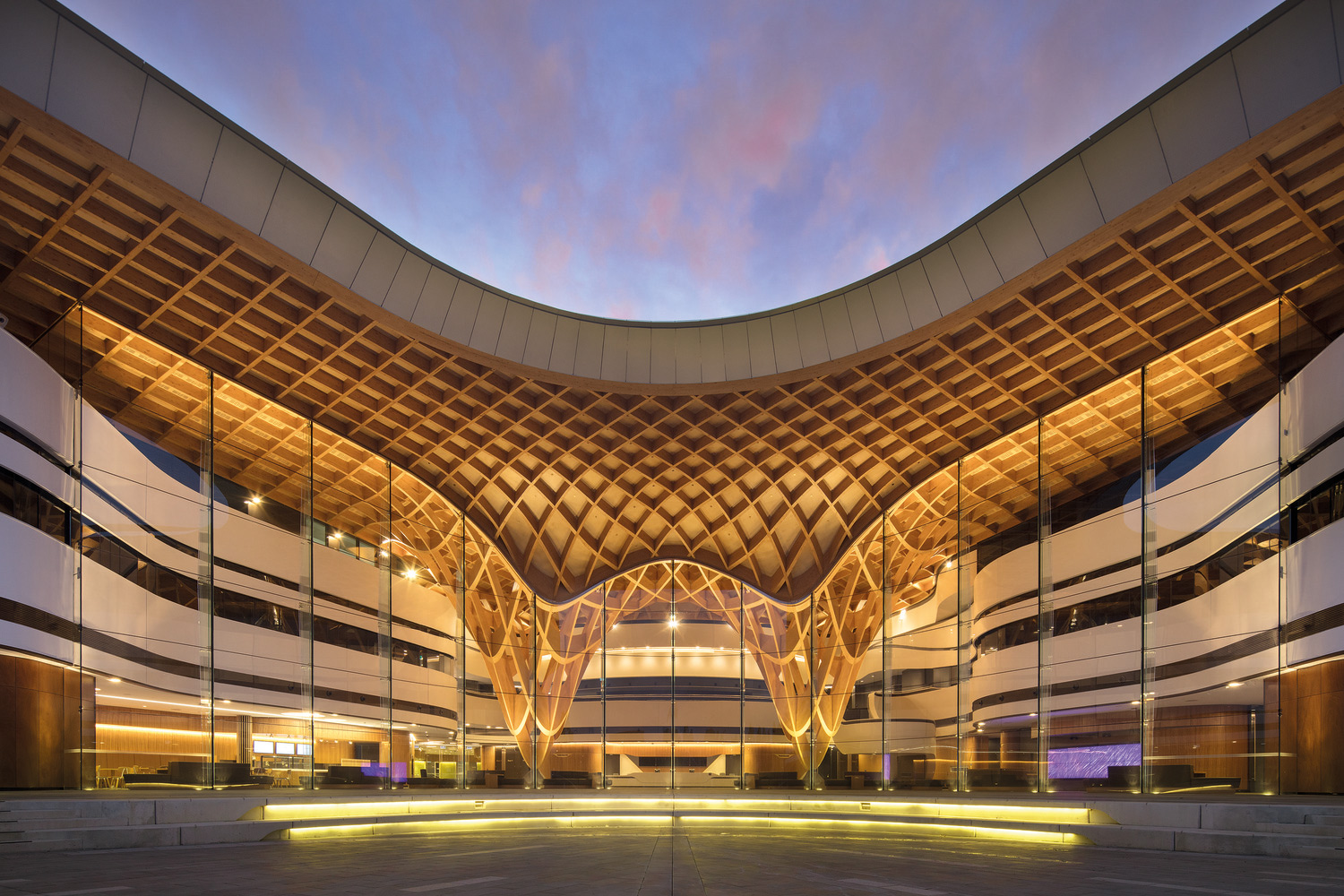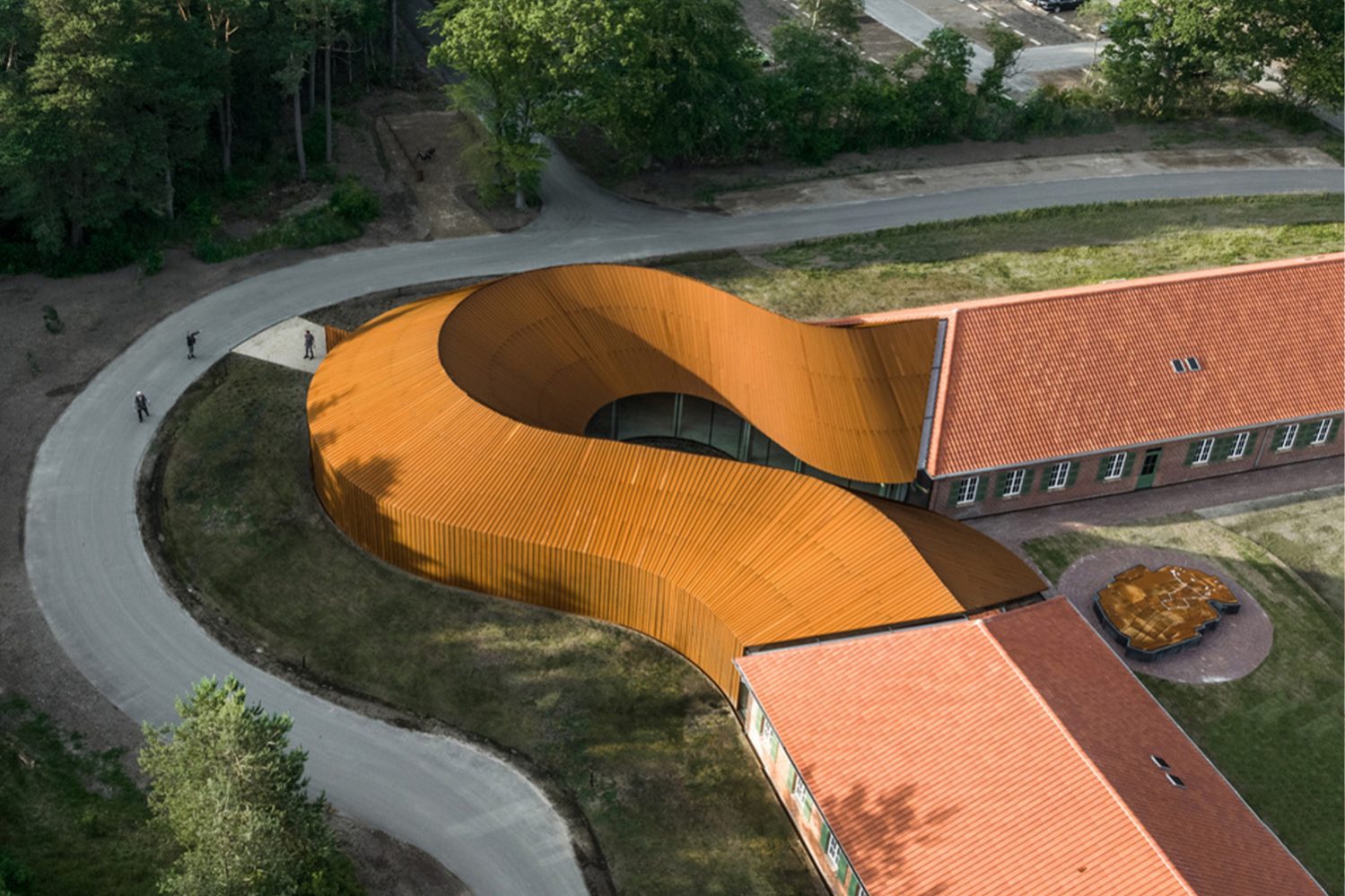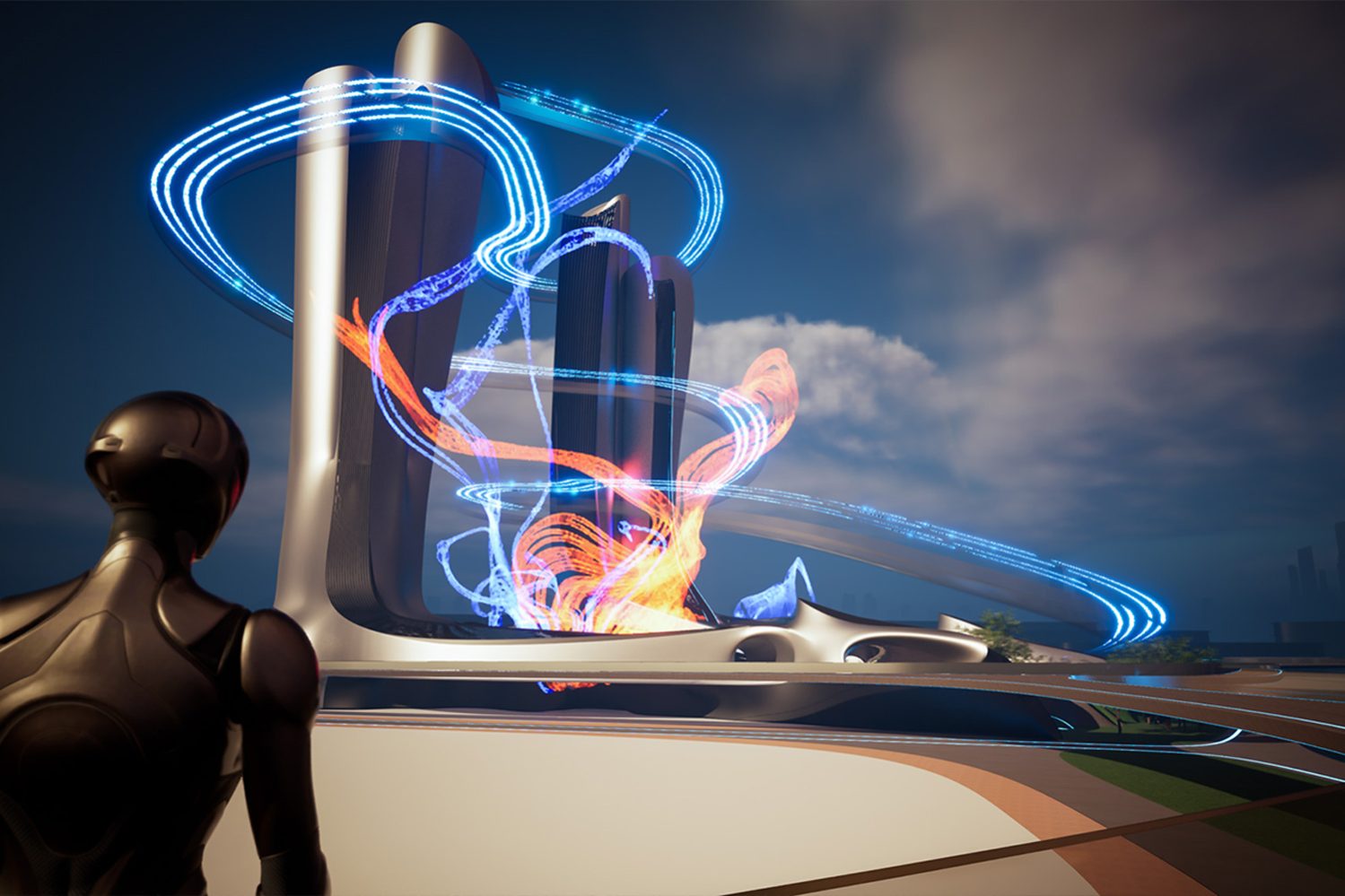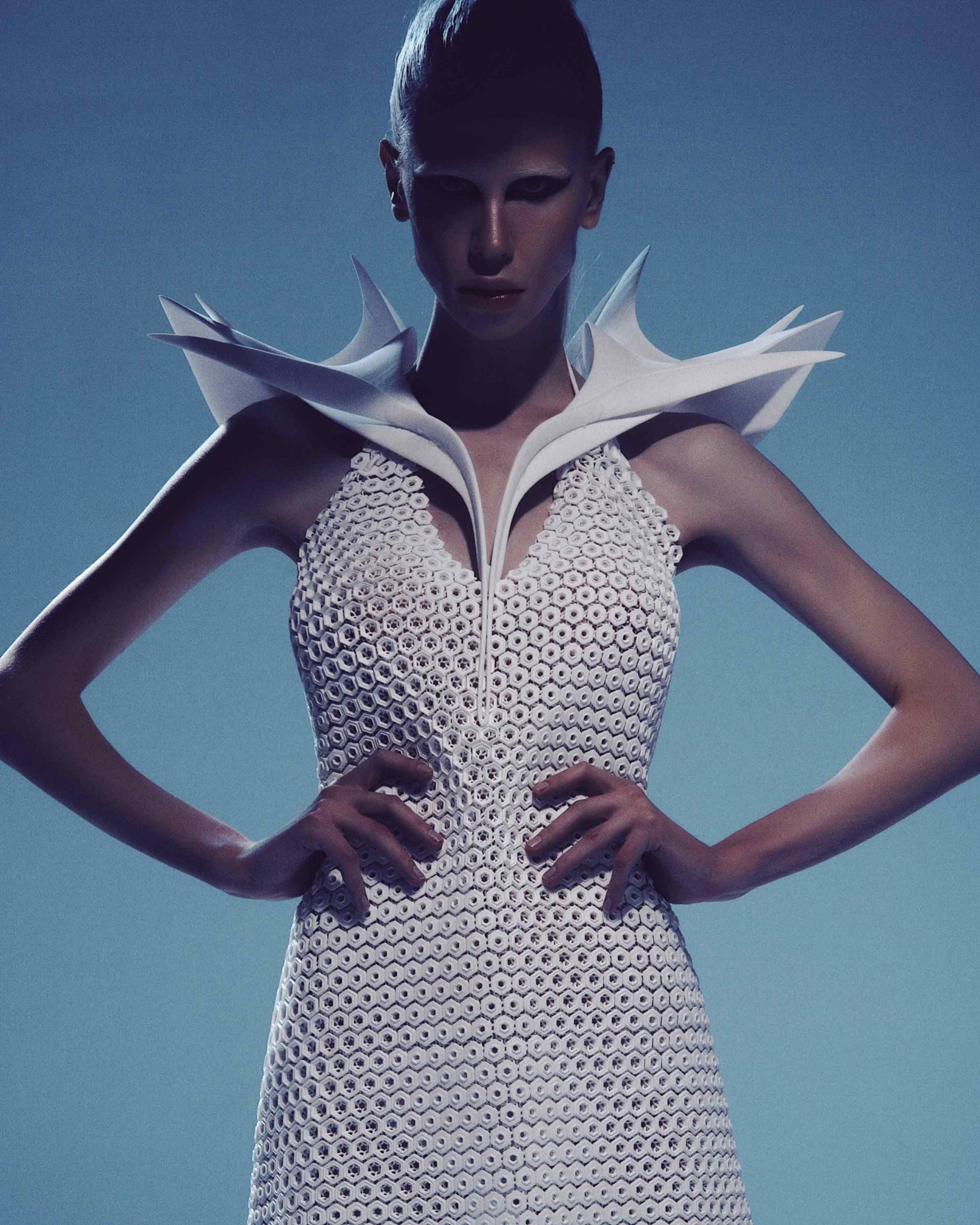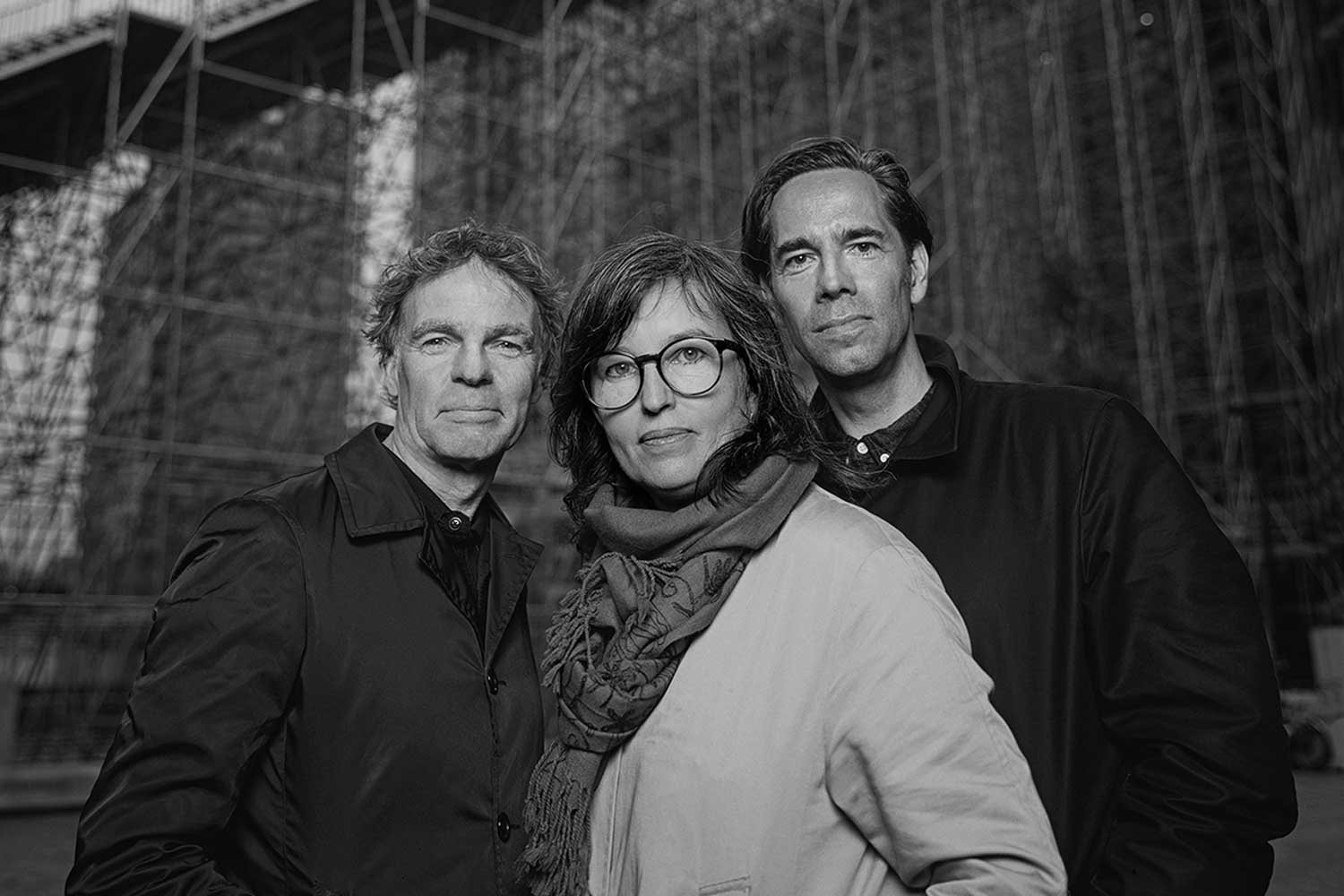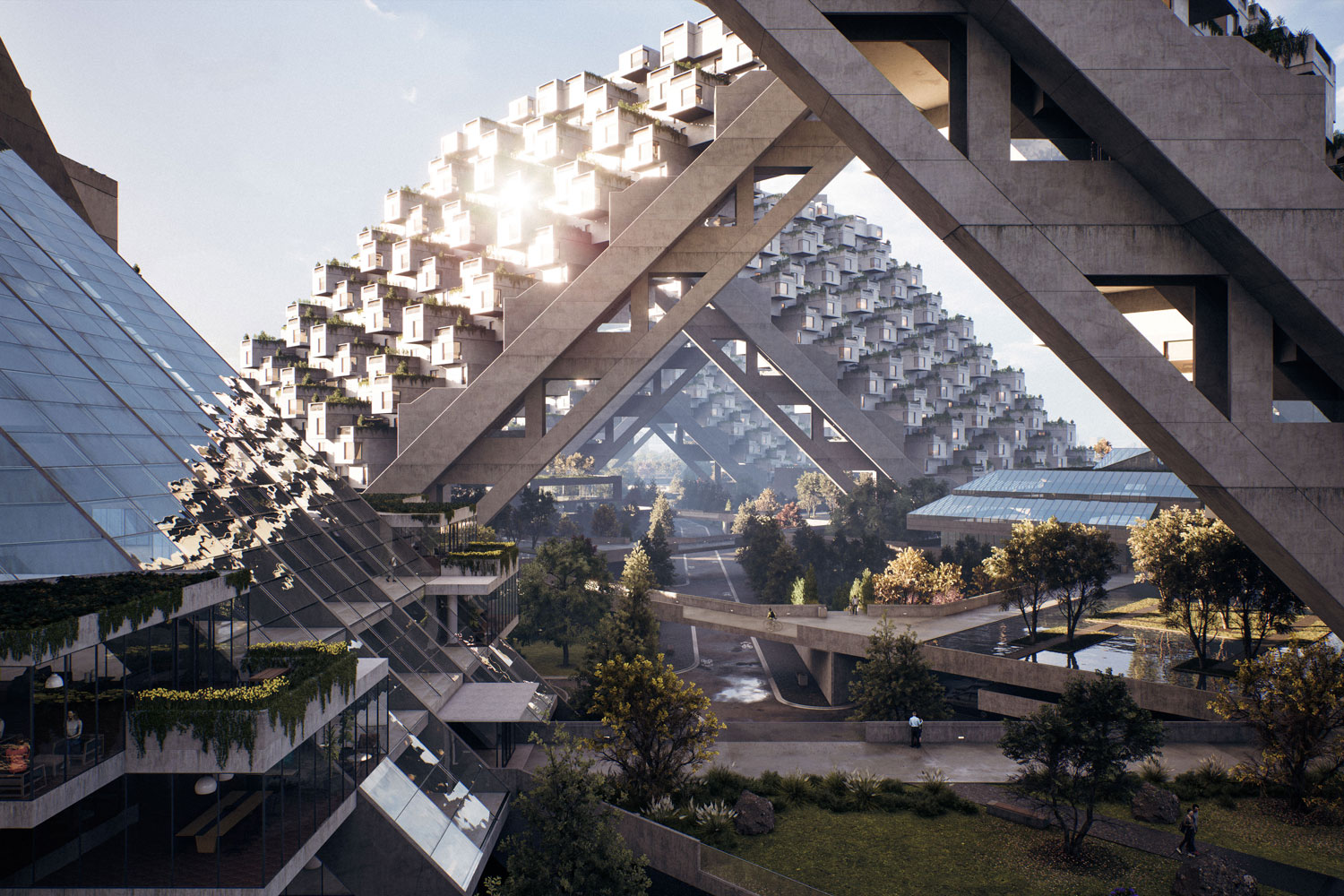A sculptural concrete façade is envisioned by the Australian studio Contreras Earl Architecture in collaboration with engineering and sustainability consultants Arup and Werner Sobek for the world’s first dedicated Living Coral Biobank in Port Douglas, Australia. As a gateway to the Great Barrier Reef, the facility will be infused and dedicated to the conservation of coral around the world.
This design aims to keep alive, secure, and nurture over the world’s 800 species of hard corals under one roof described by the creators as a ‘living ark’. As our world faces more and more severe threats due to climate change, it has become a necessity to seek out this biodiversity to be brought under optimal conditions with trifling energy consumption and solar gain. The concept of the building is to be self-sufficient and carbon neutral aspiring to the biosystems of the coral reefs at the Great Barrier Reef.
The whole 6830 sqm conservation building is conceived to be a multifunctional tome that will host exhibition areas, an auditorium, classrooms, advanced research, and laboratory facilities integrated across four levels. The sculptural façade is invoked by the curvilinear form of the mushroom coral, also known as plate coral, which is hard with distinctive radial fins that engulfs protectively.
The series of undulating vertical and overlapping concrete fins clustered in the vicinity at the ground offers ample protection from extreme weather conditions and adverse tropical threats of flood and many others. Channeling upward these fins twist and unfurl invoking natural light and ventilation into the upper levels while providing necessary solar shading.
The entry plaza features a terraced interior design with an open circular space with aquarium displays. A set of wide stairs leads to the second floor, which has a central observation platform for the visitors to view the wet lab specimen tanks in a protected glass-encased below. The fluorescence of the corals and the reflections of the light and water engage in a mesmerizing play of emotions and drama in these interior halls. Towards level four, the exterior fins spread apart progressively to emphasize the visitor experience of a naturally lit exhibition and education space offering sweeping views of the secured corals in their glory.
Monica Earl and Rafael Contreras, founders of Contreras Earl Architecture, visualized their vision in multiple level configurations of the interior to emulate the various depths of the sea. Earl’s childhood and exploration of the ocean and its marvels have profoundly impacted creation. Their ambition struck with architecture that interacts with nature in a symbiotic and complementary fashion without deterring the environment.
The project heralds a responsibility to consider the impact of architecture and the construction industry on the natural world. It is now essential to encourage carbon neutrality in the designs. The Living Coral Biobank at the Great Barrier Reef will definitely set a global benchmark for sustainable outcomes and a zero-carbon approach in defining the world’s leading conservation and education facility.
A center of hope, learning, and amazement throttles the project to become a beacon for environmental awareness.
Project Name: The Living Coral Biobank
Location: North Queensland, Australia
Architects: Contreras Earl Architecture
Area: 6830 square meters


